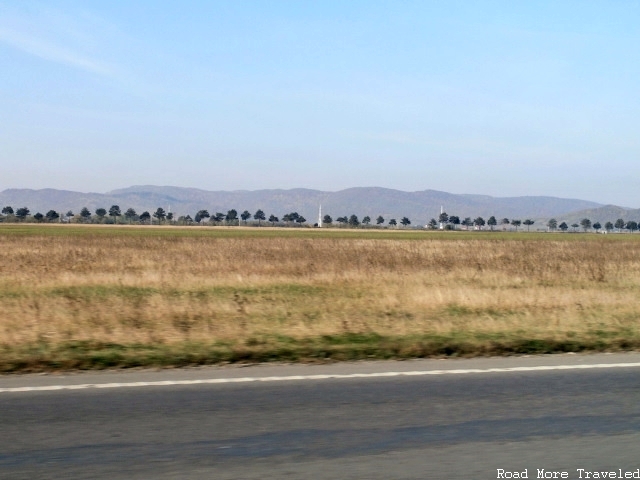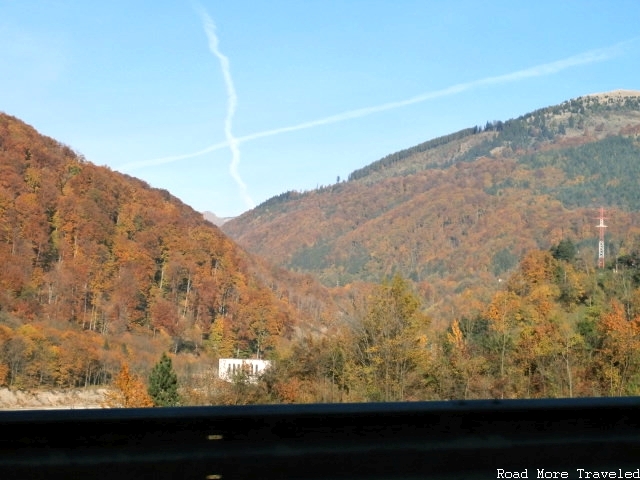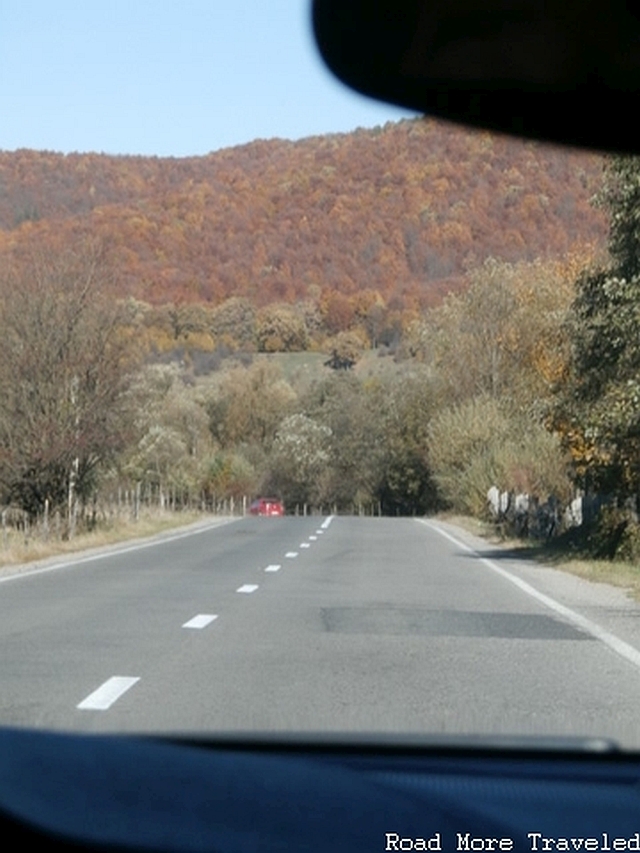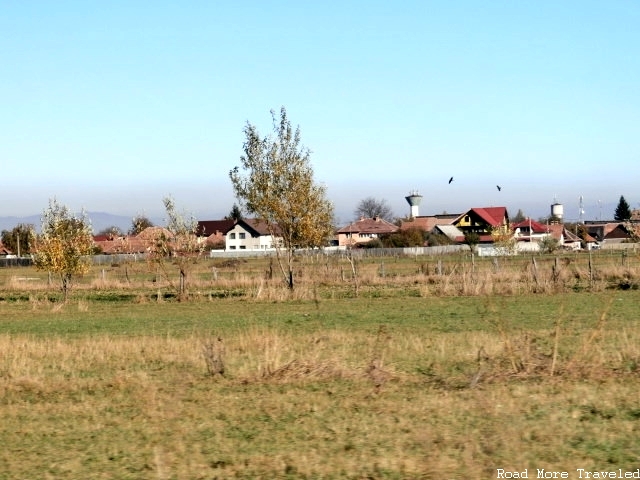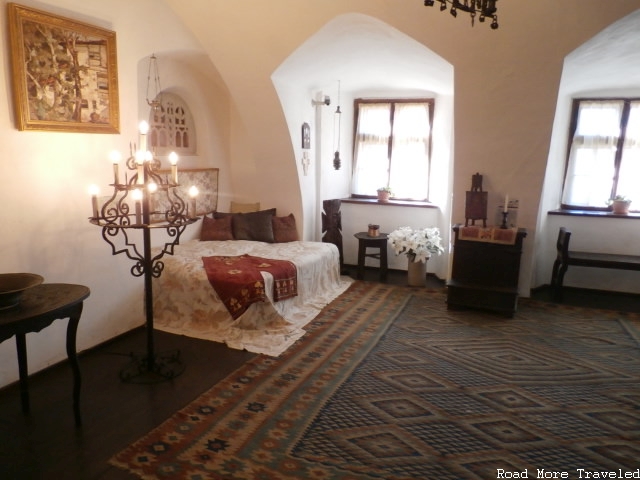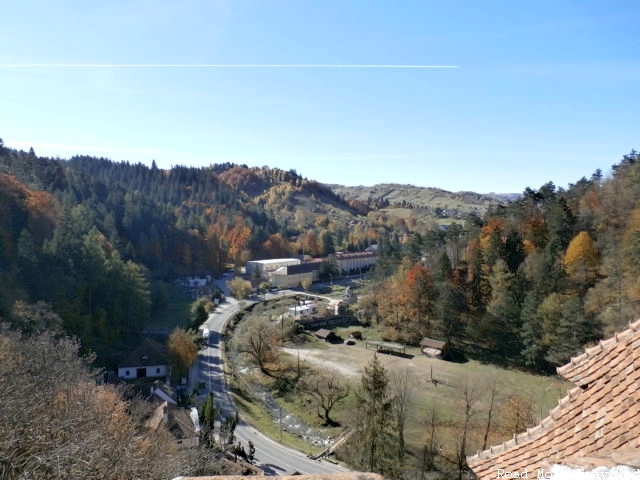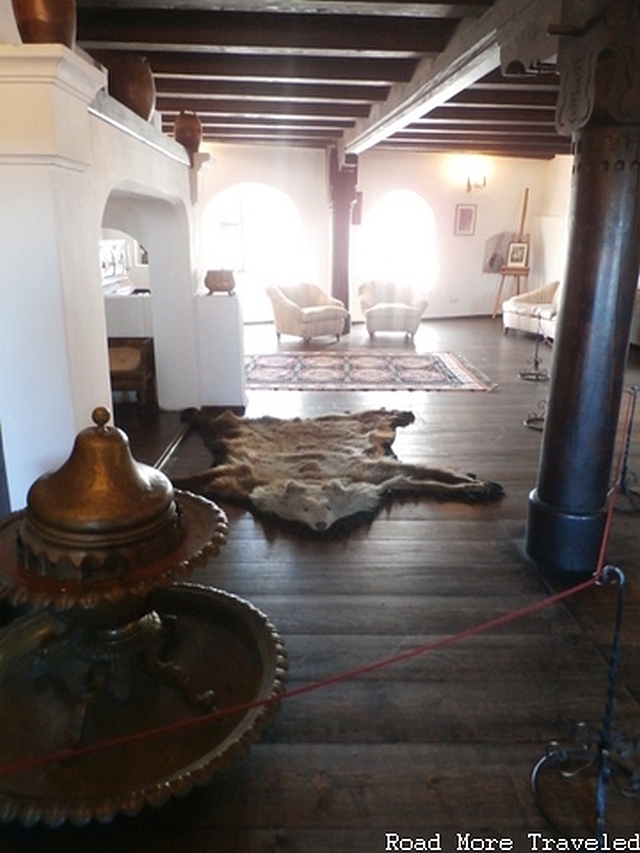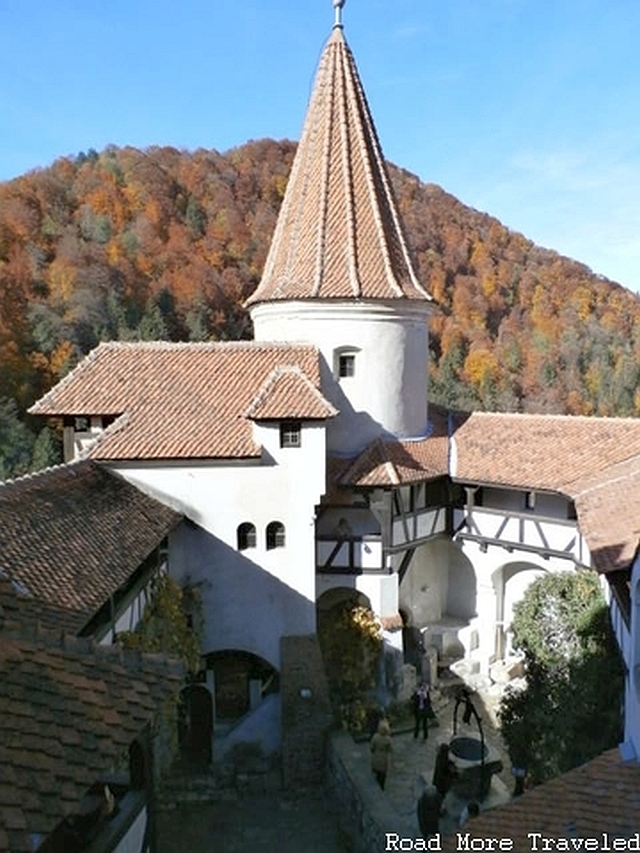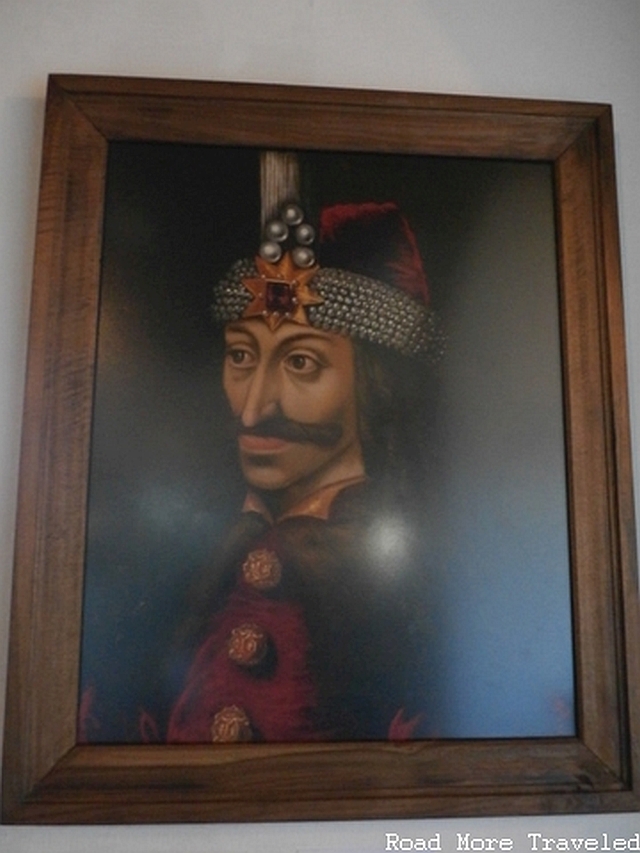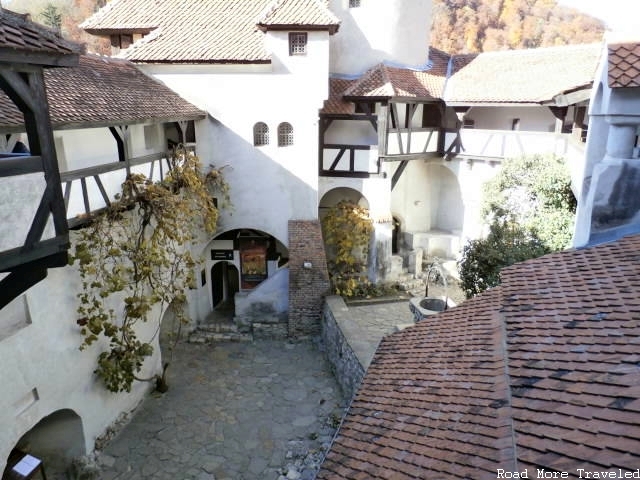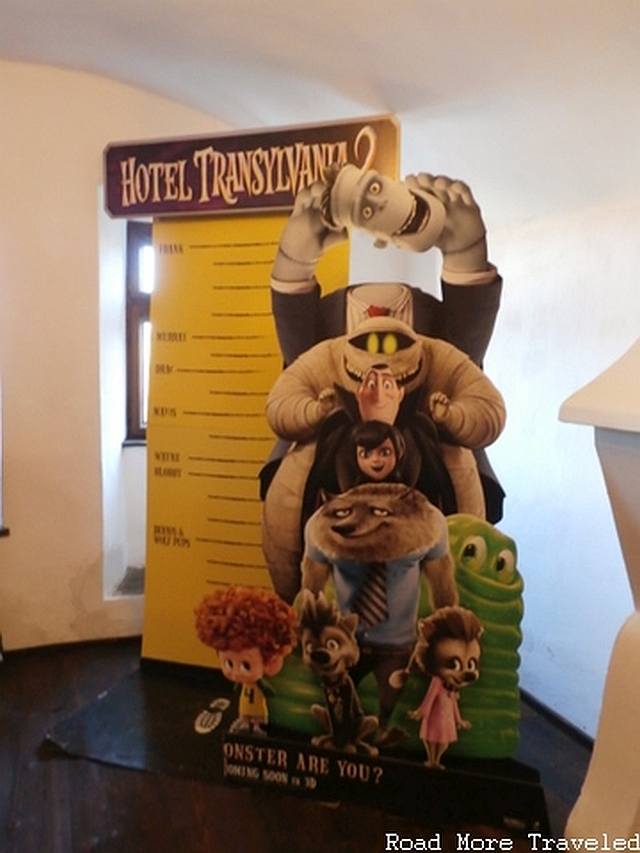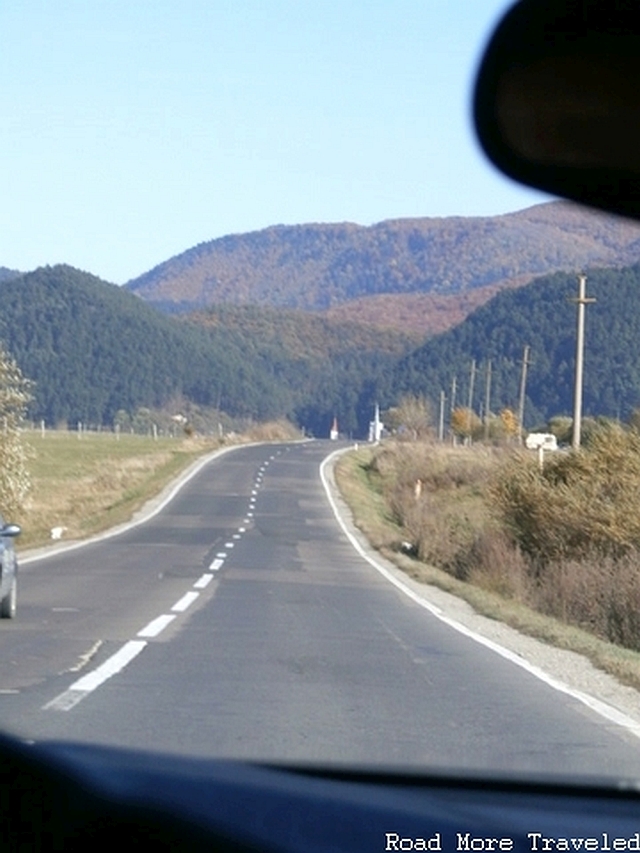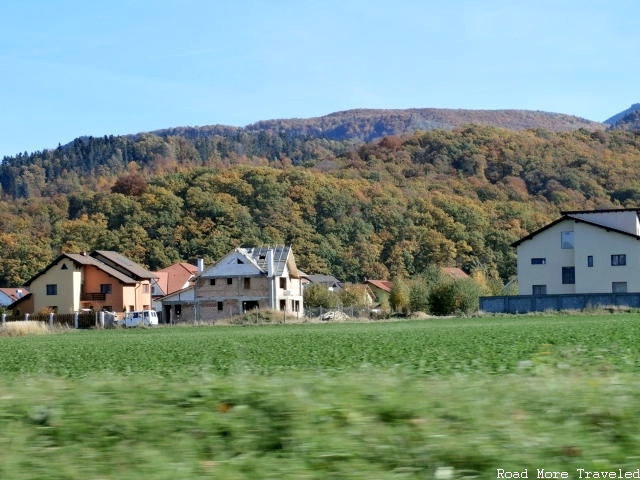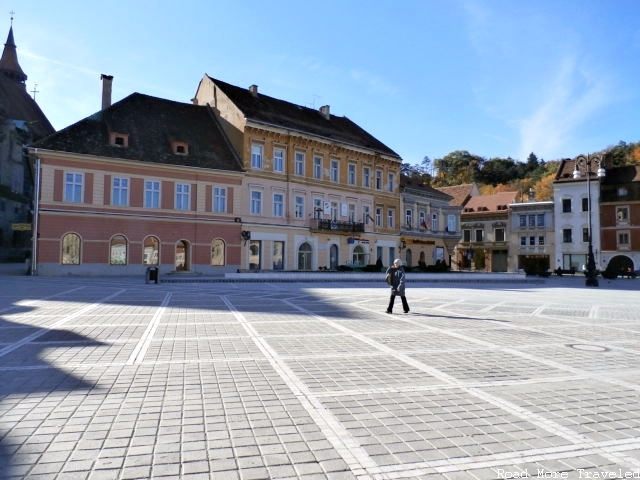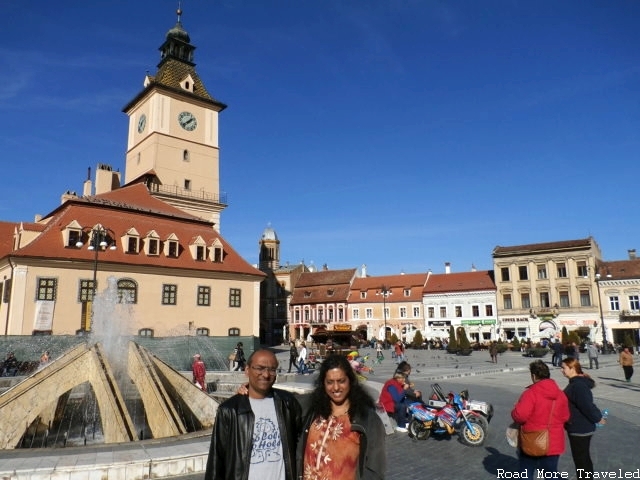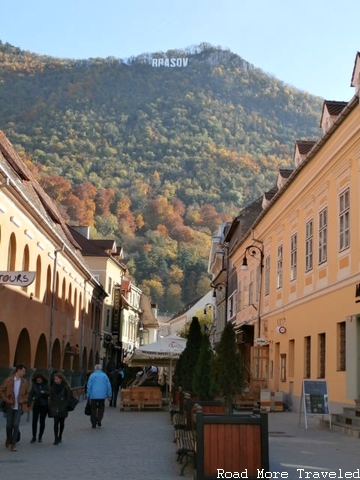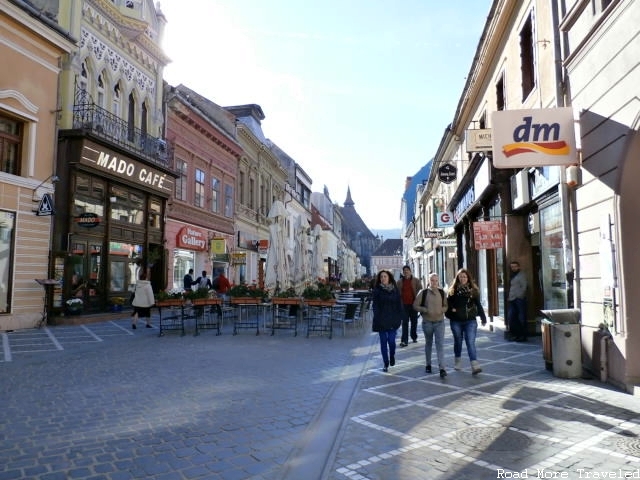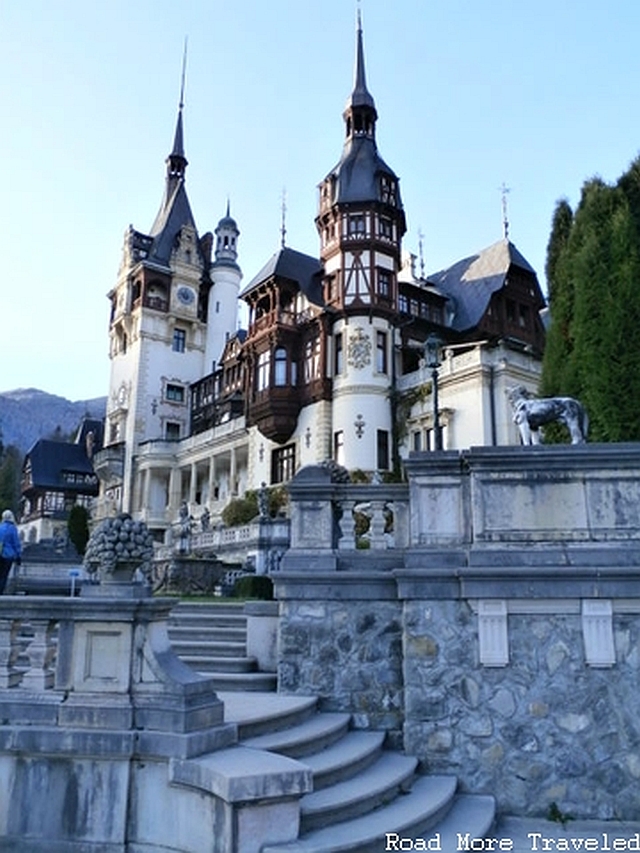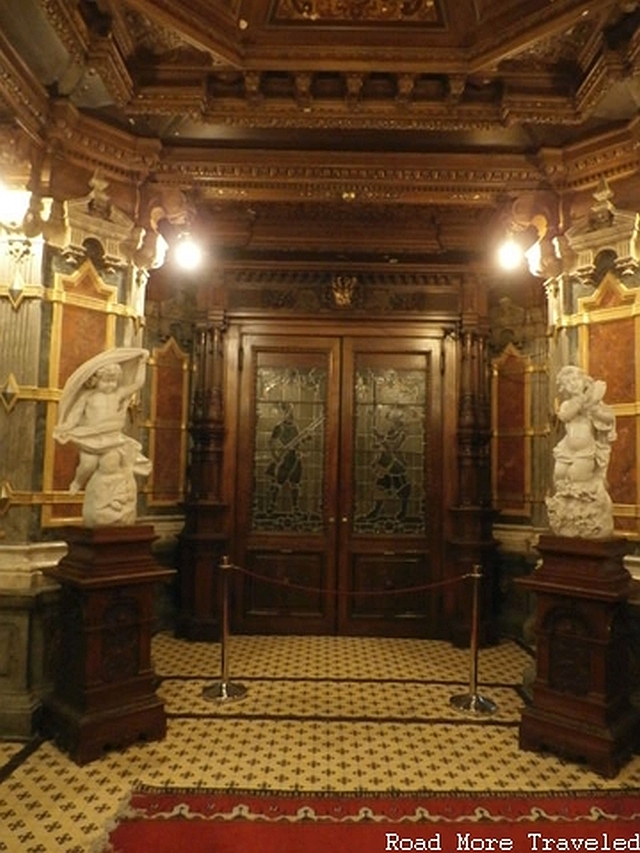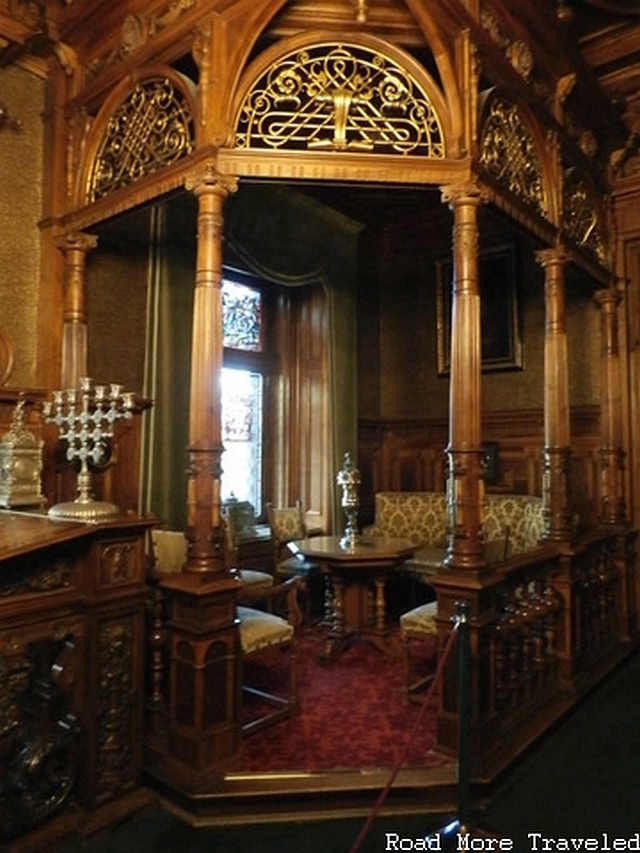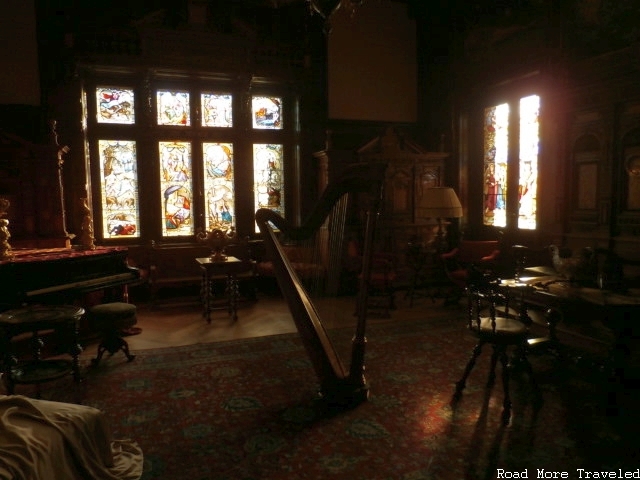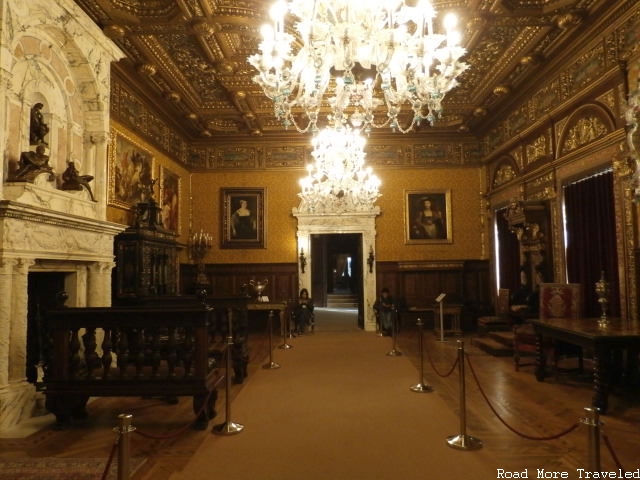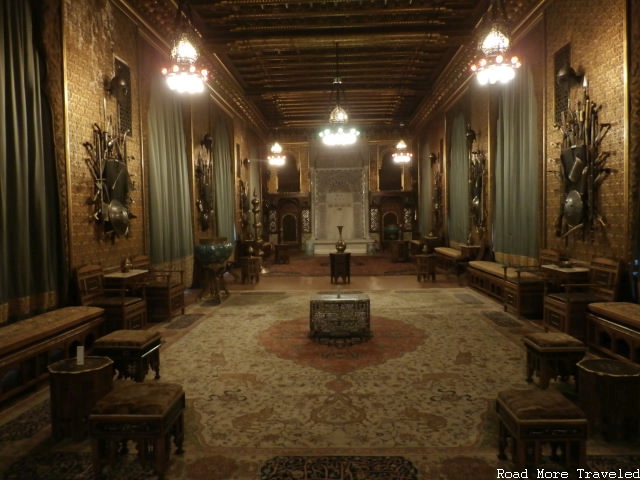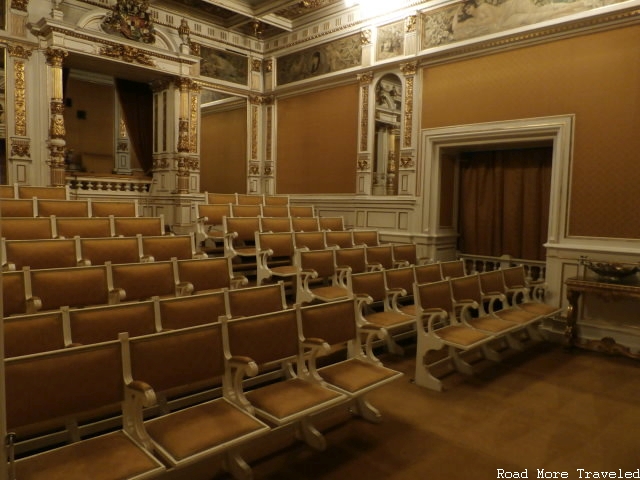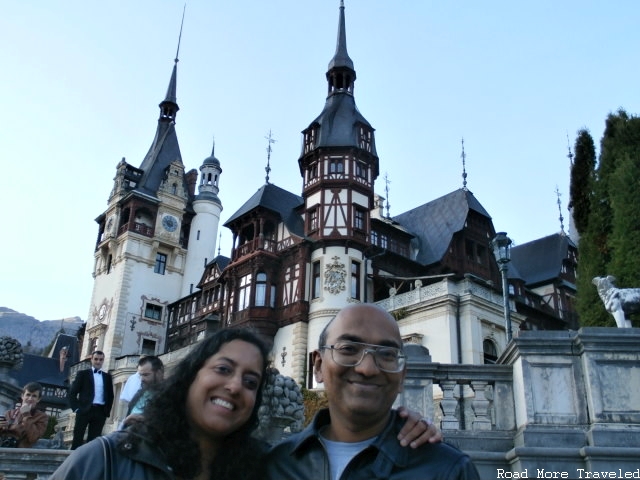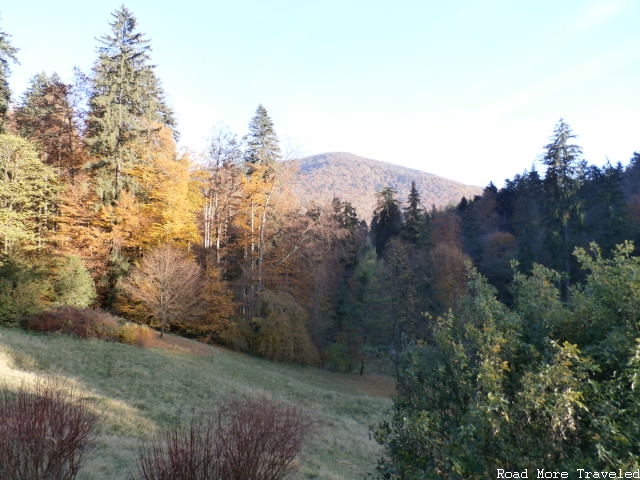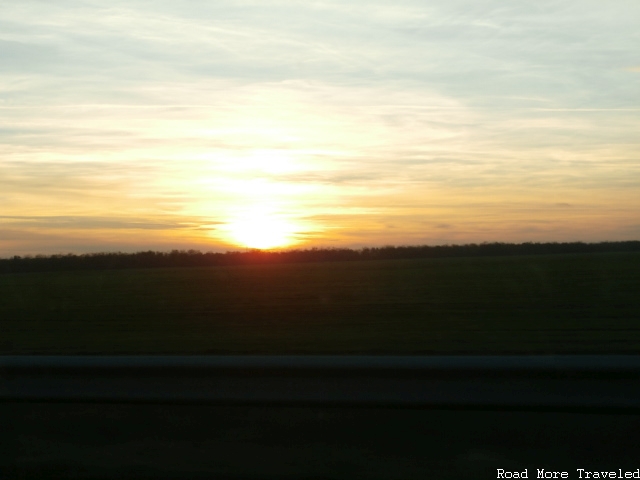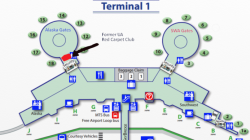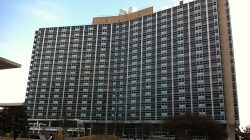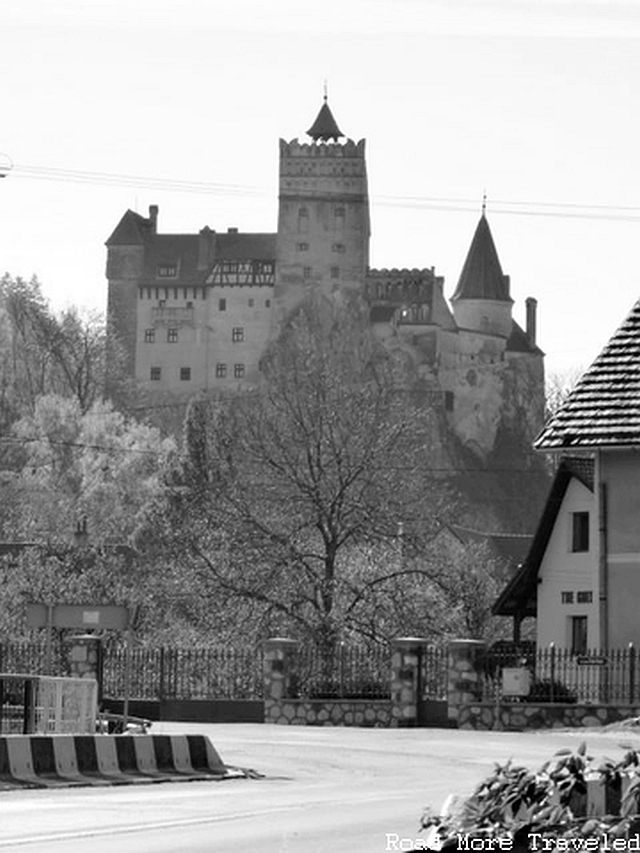
The day had finally arrived – October 29, 2015, our 9th wedding anniversary, and the trip to Transylvania. Specifically, we wanted to see Bran Castle, aka Dracula’s Castle. Why Bran Castle and Transylvania? The “Dracula” legend is something both Prita and I have always found fascinating. Touring old world castles in Romania on our wedding anniversary just seemed like an incredibly cool thing to do. A great American fare sale which got us Business Class to Paris on the cheap made the decision a no brainer.
Road Tripping to Transylvania
Now, getting to Bran from Bucharest takes a little doing. It’s a 105-mile, 2 1/2 hour drive each way. It’s possible to do in a single day, though it eats up an entire day. You can drive yourself (more on that later), but most visitors to Bran book a tour. You can find large group bus tours for as little as 70 euros a person, but the drawback with large group tours is you usually move too fast through the sites, and you don’t have much personal interaction with a guide.
Instead, we booked a tour with a company called Balkan Trails, a mom and pop outfit that arranges private tours in Romania and Bulgaria. The price was 100 euros a person. However, since this included entrance fees (~$5 per person at two sites), you’re really only paying about 20 euros extra each for your own personal guide and transportation. Incidentally, booking through Balkan Trails was easy, and our guide was great. If you’re considering doing a similar trip to this yourself, give them a look.
Our day would start early, with a pickup in Bucharest scheduled for 8 A.M. Heading north, you leave the city behind pretty quickly once you pass the airport, passing through bucolic farmland and hills.
About an hour outside of Bucharest, leaving the town of Băneşti, you begin the climb up into the Carpathian Mountains. Since it was the end of October, the fall foliage was on full display. Our guide warned us that you can encounter major traffic delays in this area during summer and ski season. Since late October isn’t a heavy tourist season, though, there were no issues.
About 45 minutes later, you pass through the resort town of Sinaia. We’d spend more time in on the way back to Bucharest. Shortly thereafter, you turn off onto a winding mountain road that passes through some dense forest before descending again out of the mountains.
Here, our guide, well-versed in Romanian history, gave us the story of the Dracula legend. The name “Dracula” derives from Vlad Țepeș, aka Vlad the Impaler, whose family name was “Dracul”. No, contrary to legend, he didn’t really drink people’s blood. But Vlad’s ruthlessness, his name, and ancient Transylvanian legends about evil nighttime spirits created the stories you hear today. Just how ruthless was Vlad? According to legend, Vlad double crossed the Turks during his reign as Prince of Wallachia in the 15th century. You didn’t cross the Turks in those days, so they naturally sent an army to take care of the problem. Hearing of the approaching Turkish army, Vlad reportedly impaled 20,000 of his own people in this very forest. Supposedly, even the Turks, tough as they were, saw this gruesome scene, and turned around and went home. Ouch…
Anyway, as the road descends out of the mountains, you officially enter Transylvania. The word “Transylvania” literally translates roughly to “beyond the forest”. Indeed, much of the landscape is characterized by farmland and charming rural Eastern European architecture surrounded by the Carpathian Mountains.
Bran Castle, aka Dracula’s Castle
Pretty quickly, we arrived at our first stop, the town of Bran, home of Bran Castle. Dating to the middle of the 14th century, and really more of a fortress than a traditional castle, Bran Castle is frequently referred to as “Dracula’s Castle”. In fact, the castle has only a tangential relationship to either the fictional Dracula or his inspiration, Vlad the Impaler. Bram Stoker sketched out a castle that strongly resembled Bran Castle in his book Dracula. However, most believe that he never actually visited the castle. The location described in the book doesn’t match the location of Bran geographically.
As for Vlad the Impaler, as ruler of Wallachia to the south and not Transylvania, he didn’t actually spend much time in Bran or use the castle as a residence. Rumor has it, though, that he spent time imprisoned here for some time following the end of his reign. Nevertheless, since truth rarely stands in the way of a good story, the nickname “Dracula’s Castle” has stuck.
I may put together a more detailed castle-specific post later, but for now, here are some photos from inside. When visiting the castle, you’ll encounter a short but steep climb up a paved path to the front entrance. Most of the castle’s tourable space is on the second and third floors. The climb up to the second floor requires you to climb a narrow, dark staircase. Trust me, though, the climb is worth the view from the top. Most of the furnishings you see inside the castle today date to the reign of Queen Marie of Romania, who lived in the castle for a time in the early 20th century. For a good shot of the imposing exterior of the castle, see the cover photo up top.
The Queen’s bedroom downstairs
View of the valley from the second floor
Apparently one of the royals hunted bears…
Castle tower with colorful mountain backdrop
Vlad the Impaler, who never actually lived here
Main castle courtyard
Meanwhile, since it was only a couple of days before Halloween, I thought there might be some interesting Halloween-related stuff in and around the castle. The answer – not really. The garden in front of the castle hosts a large Halloween fair, but the decorations and booths wouldn’t be up for another day. Bummer. About all I could find was a “Hotel Transylvania 2” poster down on the ground floor.
Down the hill from the castle entrance is a crafts market of sorts. It’s a typical tourist trap setup where vendors sell various types of junky trinkets. If you’ve got kids/grandkids/nieces/nephews/younger siblings that are in to vampires, you can pick up some cheesy Dracula-related merchandise (buttons, action figures, etc.) for a couple of bucks. We spent a few minutes there to buy some vampire trinkets for my little nephews and costume jewelry.
The Very Bavarian City of Brașov
After lunch, we headed to our second stop, a brief look at the city of Brașov. The drive from the castle is a short one – about 20 miles – and you once again get to enjoy the charming Transylvanian countryside.
The area around Brașov has played an important part in Romanian history for many centuries. There is evidence of continuous human settlement dating back to 9500 B.C. The city itself dates to the early 13th century, when the then-Hungarian rulers invited German colonists (known as the “Transylvanian Saxons”) to settle the area. Thus, the city has a strong German feel to it, something that becomes readily apparent as you step out into the town square.
The square is headlined by the Casa Sfatului din Brașov, the city’s administrative building built in 1420.
Also visible from the town square, on the hillside overlooking the city – a fake Hollywood sign. Except it’s not Hollywood, it’s Brașov.
The east side of the historic city center features several wide, pedestrian-only streets, which feature a variety of shops and restaurants. One of my big regrets in hindsight was not extending our trip by a day, and spending two days visiting Transylvania so we could spend an overnight in Brașov. It seemed like a pleasant, laid-back city that would have been a good place just to walk around for an afternoon/evening and enjoy some delicious Romanian food in one of the streetside cafes. I would have also loved to see the Black Church, barely visible at the far end of the photo below, which some claim to be the oldest Gothic-style church in Southeastern Europe.
A Truly Fairy Tale Experience – Peleș Castle
Our visit to Brașov was unfortunately too short, but there was a good reason. We had a roughly one hour drive to the mountain town of Sinaia to visit our final stop, Peleș Castle, and we needed to get there with enough time to look around before it started getting dark. Unlike Bran Castle, which was primariy designed as a fortress but later became a royal residence, Peleș Castle was always designed to be, well, a castle. King Carol I, under whose reign Romania would later gain independence, purchased 1,300 acres of land in 1872 for the purpose of constructing a hunting preserve and summer residence. Construction started in 1873; the castle took more than 40 years to complete, with all work finally completed in 1914 (King Carol and his family began living in the unfinished castle in 1883, however).
The cost – an astonishing 16 million Romanian lei in gold, or approximately $120 million today. The result, though, was an astounding site straight out of a fairy tale.
To borrow a line from Kevin’s Singapore Suites trip report, if Bran Castle is about classic, understated elegance, Peleș Castle is all about the bling. Again, I’ll likely write something more detailed about the castle in a future post, but it’s pretty unmistakable from the moment you step inside and see these selected photos – this castle was meant as a royal showcase piece.
Near the castle entrance
The King’s private meeting room
Reception room, complete with a harp
Chandeliers and marble fireplaces
The King’s reception room
A private theater. Yes, a theater. In 1883.
Not surprisingly, a castle like this is in high demand as a place to take wedding photos, and indeed, as we were walking around outside after our tour of the inside, there were one or two couples-to-be having their photo shoots. Prita and I took the opportunity to have an informal anniversary photo with the idyllic castle as a backdrop.
With the castle located in the Carpathian Mountains, this is also a good spot to see fall foliage.
The title of this post mentioned “ruthless dictators”, and yes, Peleș Castle does play a part in the life of one. In my post about our time in Bucharest, I’d mentioned that former Communist President/dictator, Nicolae Ceauşescu, was famously a man of poor taste. Many historic buildings drew Ceauşescu’s ire, and he earmarked them for destruction through a program called “systematization”. This program basically replaced historic buildings with Soviet Realist architecture. Peleș Castle was one of the buildings tagged for destruction. Though it ultimately escaped the wrecking ball, the castle was closed to the public from 1975 through the end of Ceauşescu’s regime, during which time it was neglected and fell into a state of disrepair. During the 1980s, the castle was infested with the dry rot fungus; fortunately, Ceauşescu was deposed before the castle could be completely destroyed, and it was restored to its original grandeur.
Anyway, with the tour of the castle completed, it was time to head back to Bucharest after a long day. But not before enjoying a beautiful Romanian sunset after we descended back down into the plains.
A Word About Driving in Romania
Given the relatively short distance from Bucharest to Bran, you might be tempted to save the money on a tour, rent a car, and drive yourself instead. My advice is, think twice before doing so. Main roads in Romania aren’t in bad shape, but driving behavior, on the other hand, is erratic. Though it doesn’t match India or SE Asia levels of craziness, expect things such as risky passing on 2-lane roads, poor lane courtesy, and tailgating. Particularly in the mountains, it’s not unusual to encounter drivers trying to pass on blind curves. Needless to say, that can be extremely unnerving if you aren’t expecting it. Given that private tours are so cheap, and public transportation even more so, I wouldn’t risk it.
Next up: you really thought this blog could go two whole months without talking about food? Not a chance. I’ll have a flavorful post about the cuisine of the Czech Republic and Romania.
This post is part of my trip report series about our trip to the Czech Republic and Romania in October. Click here for the introductory post and trip report index.


